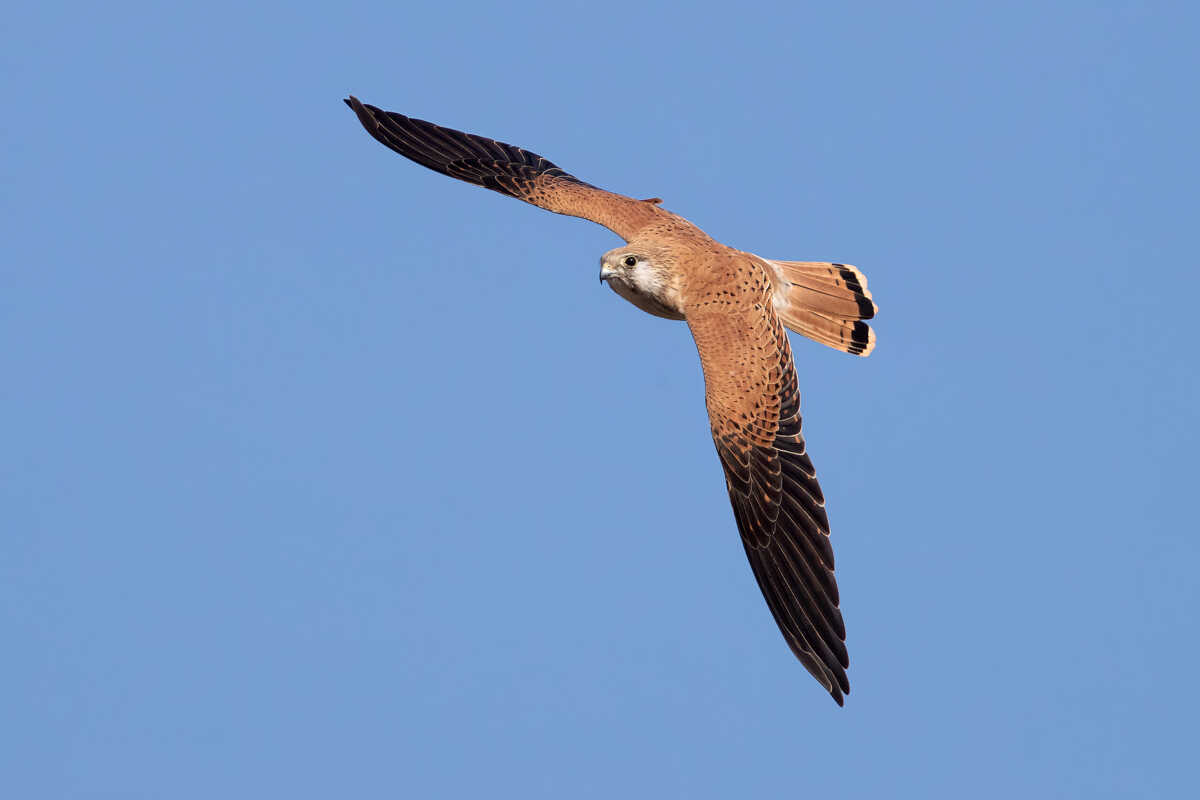{{{description}}}
Central Australia is home to many rare bird species which vary a lot due to the diversity of the environment. Try to spot as many as you can as you traverse the land.
Mistletoebirds (Dicaeum hirundinaceum) are called mistletoe flowerpeckers as well, and the male ones have a recognizable red and white breasts. Mistletoe berries are their main food source -- hence the name, and they play an important role in its spread. Learn more at https://en.wikipedia.org/wiki/Mistletoebird
Photo by John Harrison (CC BY-SA 4.0)

The wedge-tailed eagle (Aquila audax) can be identified by its wedge-shaped tail and is the largest living bird of prey in Australia. It is also one of the largest eagles in the whole world with a maximum wingspan of 2.84 metres. Can be spotted at high altitudes as well as in woodlands and rural areas. Learn more at https://en.wikipedia.org/wiki/Wedge-tailed_eagle
Photo by Donald Hobern (CC BY 2.0)

Yellow-throated miners (Manorina flavigula) are noisy and sociable but can act hostile towards other bird species. It is usually spotted in woodlands but can also be seen in farms and gardens. Keep an ear out dawn to hear its call. It has a distinctive white rump that makes it easier to identify. Learn more at https://en.wikipedia.org/wiki/Yellow-throated_miner
Photo by John Harrison (CC BY-SA 4.0)
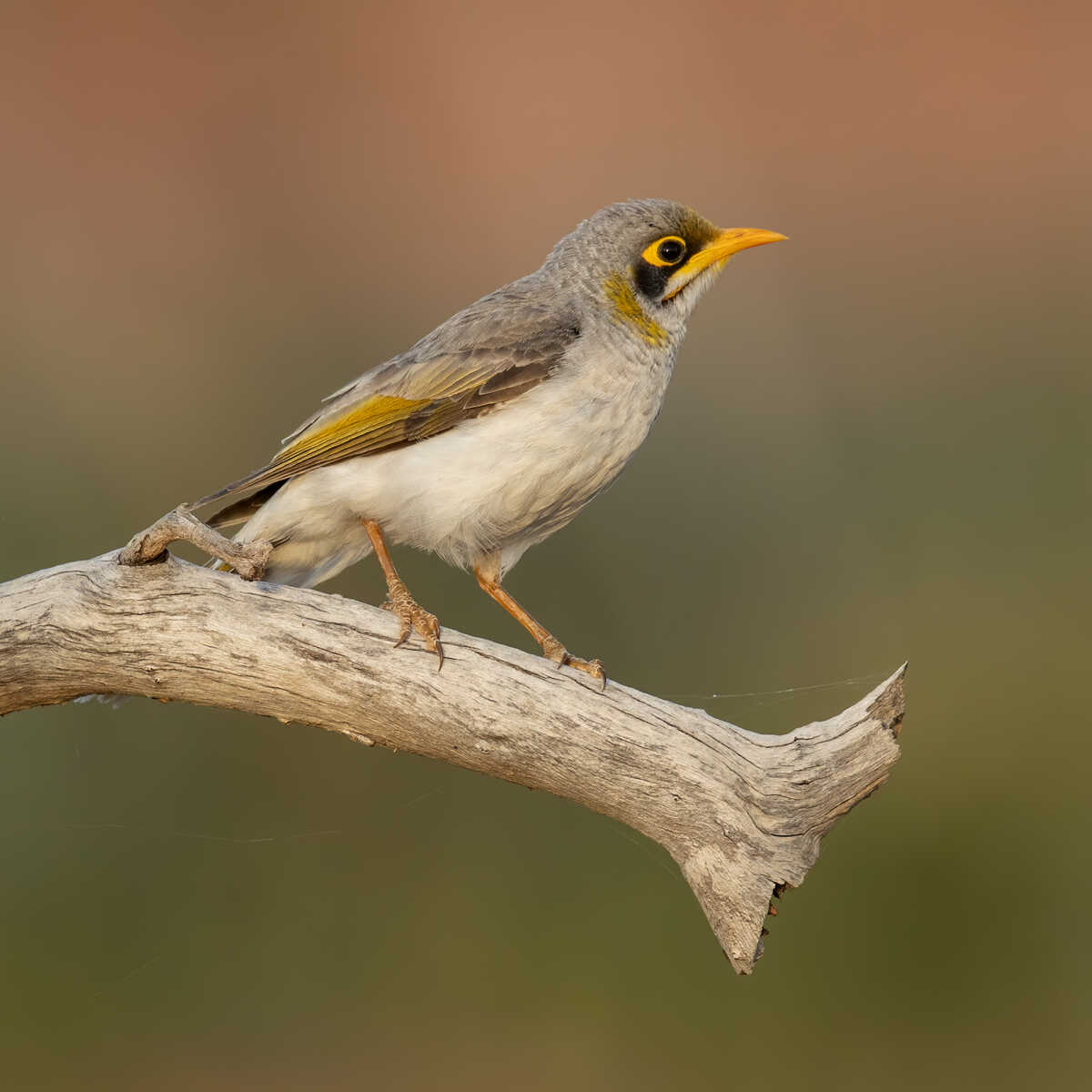
Western Bowerbirds (Chlamydera guttata) are known for their long necks and round heads that are marked with spouts as well as their upper body. They are endemic to Australia and can be found in open forests and shrubs in arid lands, although there's a chance you can see one drinking from a creek. Their diet consists of fruits, rock figs, mistletoes, snake gourd and sandalwood. Learn more at https://en.wikipedia.org/wiki/Western_bowerbird
Photo by Christopher Watson (CC BY-SA 3.0)
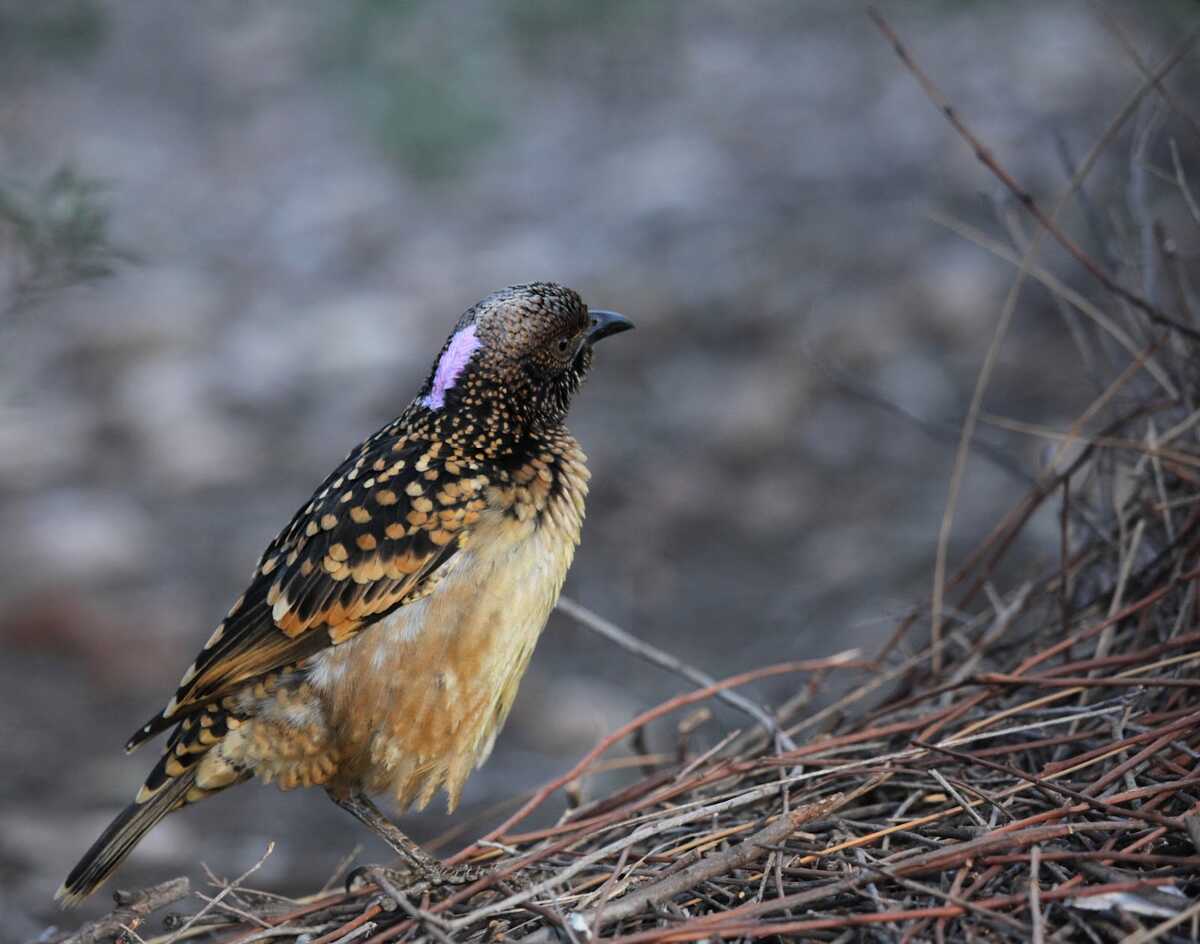
The Southern Boobook (Ninox boobook ocellata) is a subspecies of the Australian Boobook and is the smallest owl on the Australian mainland. They are also called "mopoke" thanks to their call. They are distinguished by their dark chocolate brown/rufous-brown feathers. If lucky, you can see them nesting in hollow eucalyptus trees. They are able to adapt to almost all kinds of environments. Learn more at https://en.wikipedia.org/wiki/Ninox_boobook_ocellata
Photo by Jarrod Amoore (CC BY 2.0)
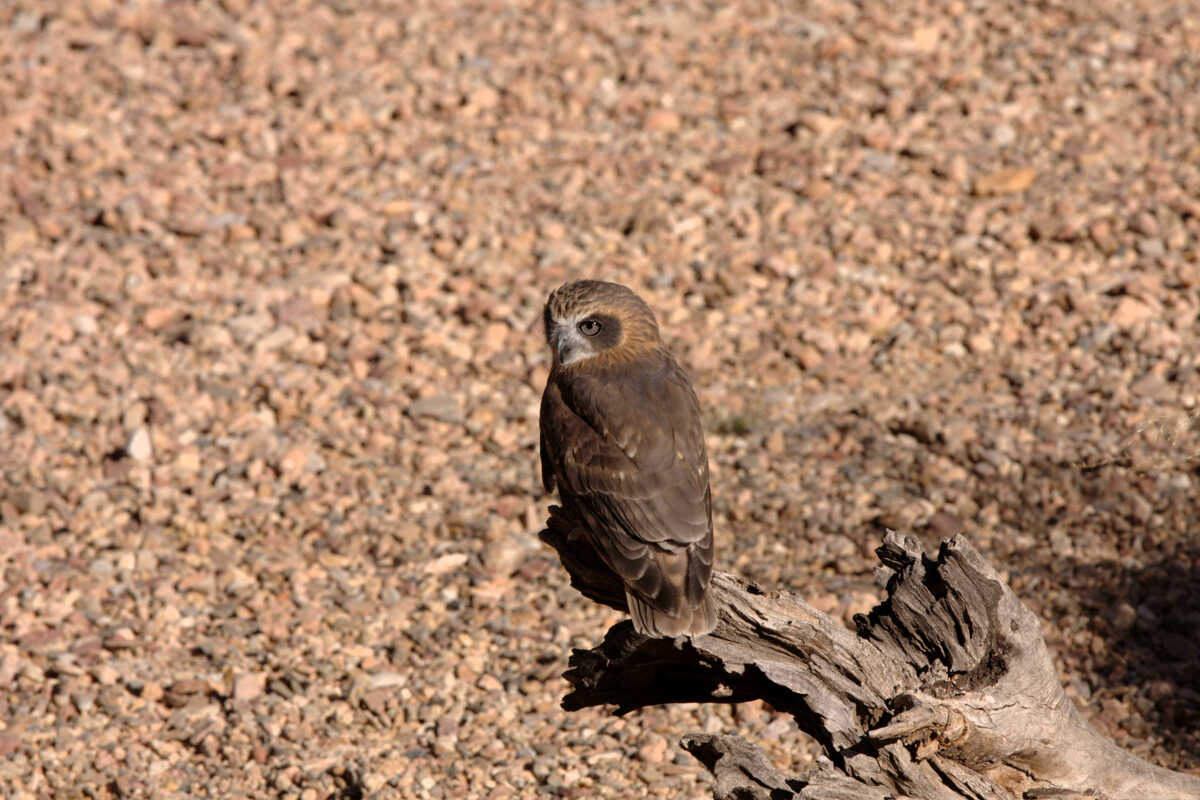
(Coracina novaehollandiae) A slick-looking bird that has greyscale colours, the black-faced cuckooshrike can be found almost in any woodland in Australia besides rainforests. They travel in large groups outside their breeding season and can usually be seen on power lines. Learn more at https://en.wikipedia.org/wiki/Black-faced_cuckooshrike
Photo by John Harrison (CC BY-SA 3.0)
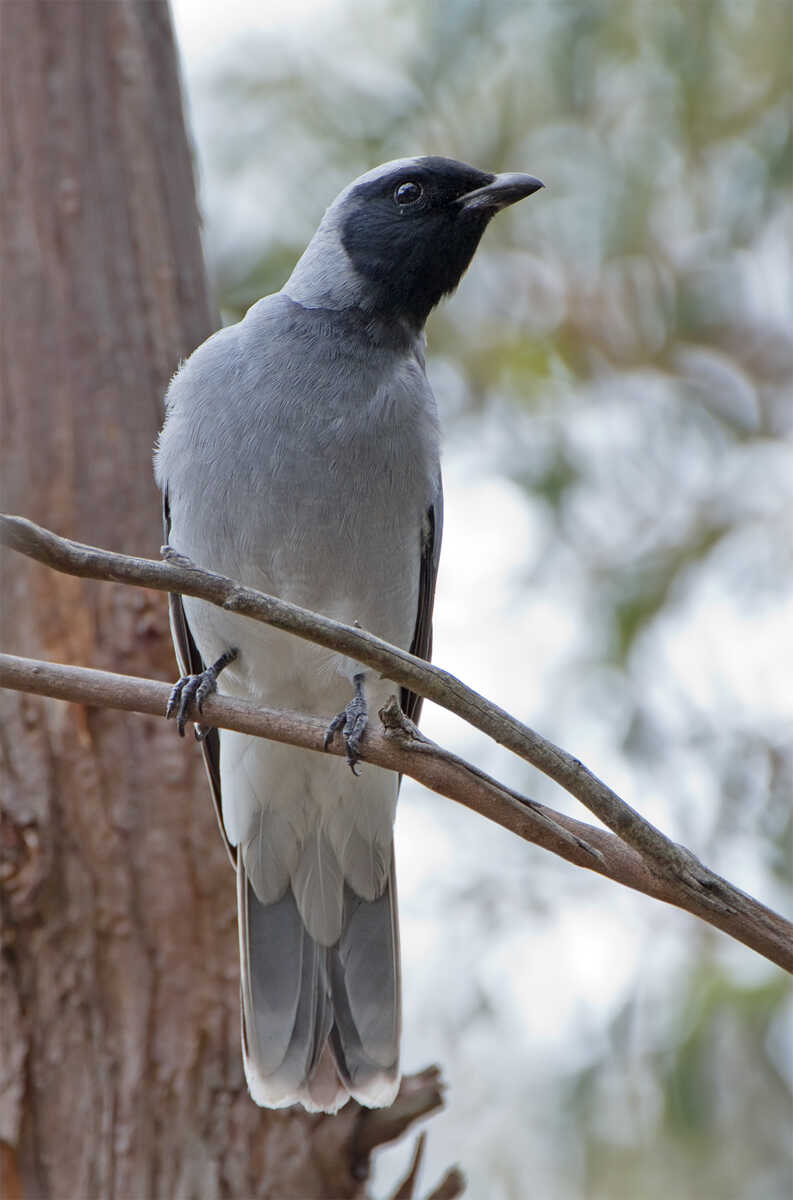
The crested bellbird (Oreoica gutturalis) is native to arid areas of Australia and can be found in different woodlands and dunes as well as Spinifex plains. They can be identified by their high-pitched bell-ish call -- hence the name bellbird. Their nests are shaped like cups and typically are not built high up in the trees. Learn more at https://en.wikipedia.org/wiki/Crested_bellbird
Photo by Peter Jacobs (CC BY-SA 2.0)

The magpie-lark (Grallina cyanoleuca) surprisingly has nothing to do with magpies or larks. It can be found in different biomes and environments all around Australia, excluding rainforests. The species is also known as "mudlark", "peewit" and "peewee". It's 25 - 30 cm long and boldly pied in black and white. Females have a white throat, while males have a black throat and a white "eyebrow". Learn more at https://en.wikipedia.org/wiki/Magpie-lark
Photo by Wayne Butterworth (CC BY 3.0)
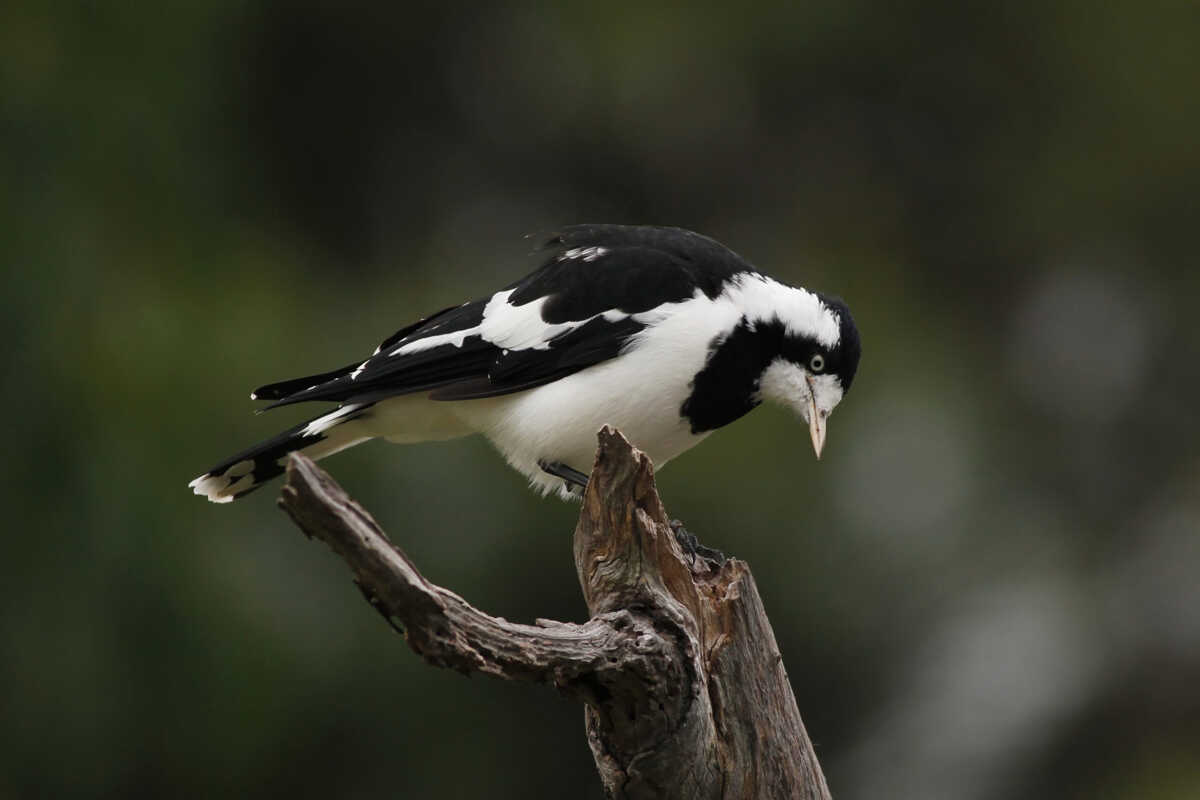
The black-faced woodswallow (Artamus cinereus) has an iconic "Zorro-like" mask on its face. It is also identified by the white notches on its tail. This species generally hang out in groups and is seen together on branches. They have a delicate call but are also able to mimic sounds to an extent. Learn more at https://en.wikipedia.org/wiki/Black-faced_woodswallow
Photo by John Harrison (CC BY-SA 4.0)
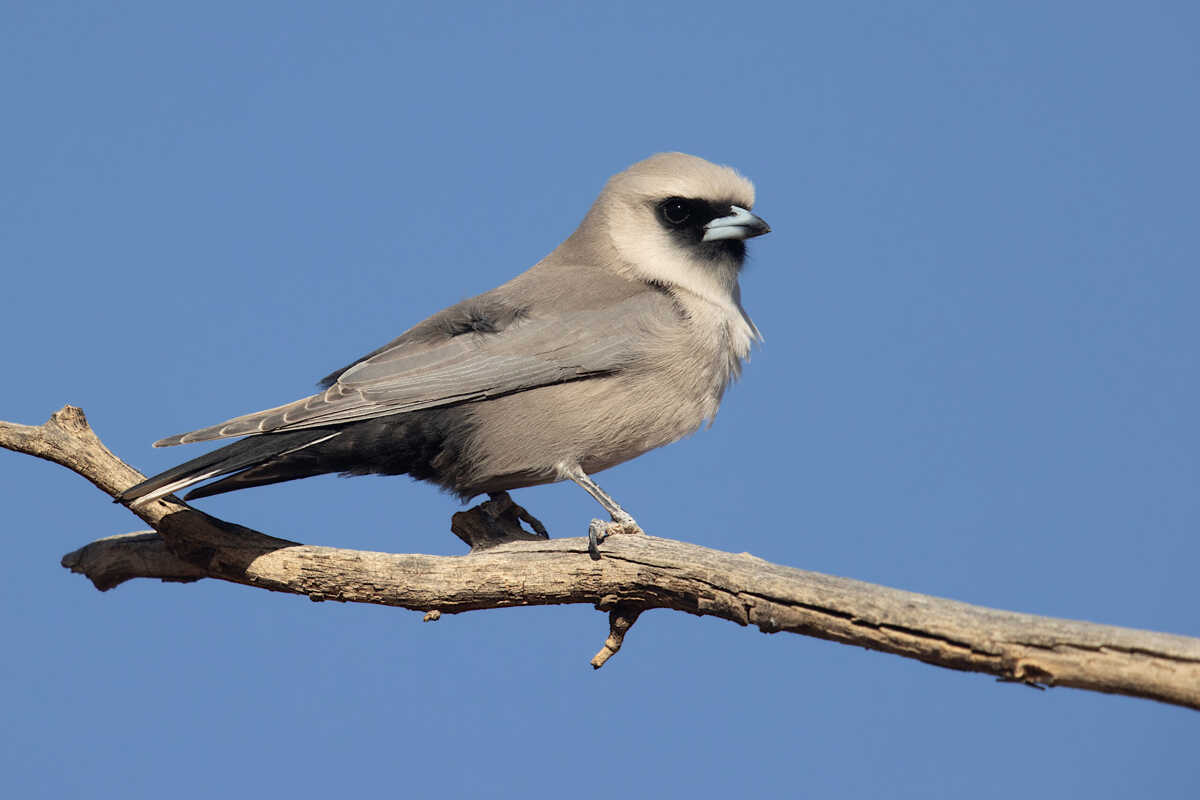
The whistling kite (Haliastur sphenurus) can be identified by its loud, piercing call that is quite high-pitched. It can be distinguished by the rounded tail and the underwing pattern as well. It is also known as the "whistling eagle" and "whistling hawk". The scavenger bird is active during the daytime and rests in trees at night. Learn more at https://en.wikipedia.org/wiki/Whistling_kite
Photo by John Harrison (CC BY-SA 4.0)
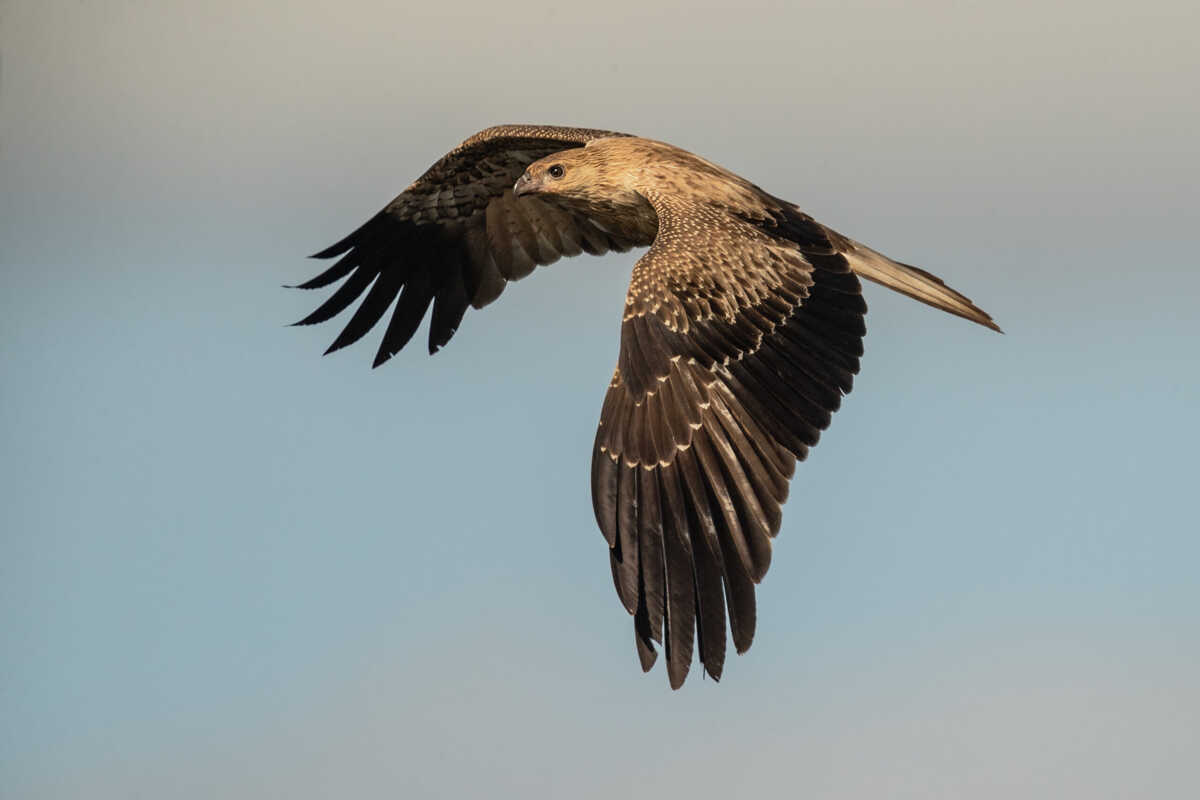
Distinguished by its pointed narrow black wings, the Australian pratincole (Stiltia isabella) has slim long legs and orange-brown plumage. It runs quite well thanks to the aforementioned long legs and can be seen around airfields. Grasslands and rocky areas are also favoured. It can be spotted from October to January and feeds generally on insects. Learn more at https://en.wikipedia.org/wiki/Australian_pratincole
Photo by Christopher Watson (CC BY-SA 3.0)
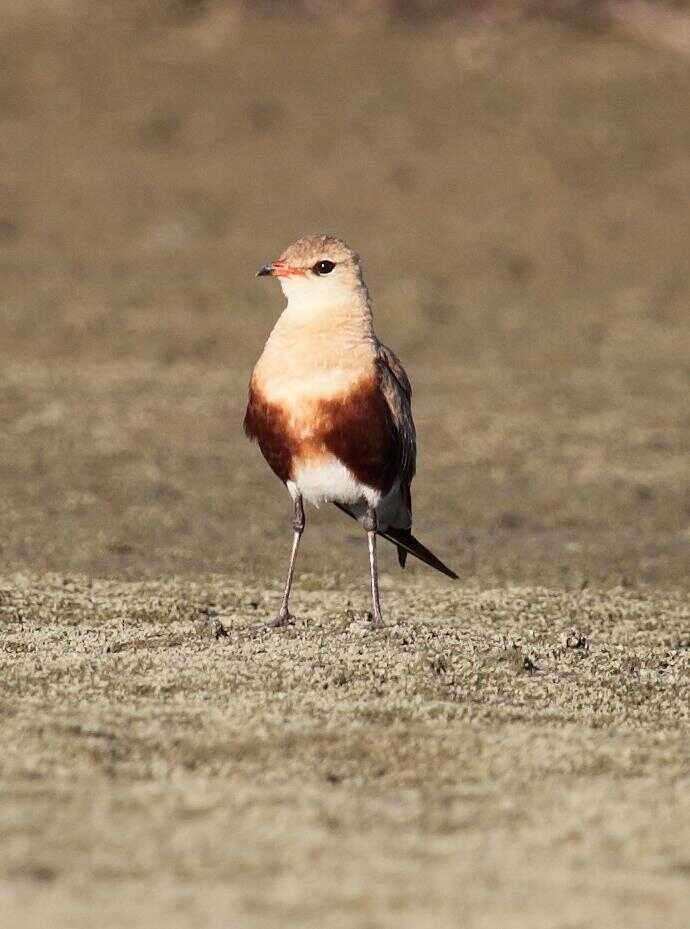
The black kite (Milvus migrans) is the only bird of prey that has a forked tail. Therefore, it's not so hard to distinguish it from other species. Pay close attention and you can see the said tail twisting in the air as the bird gains altitude using the thermal airflow. Learn more at https://en.wikipedia.org/wiki/Black_kite
Photo by Graham Winterflood (CC BY-SA 2.0)
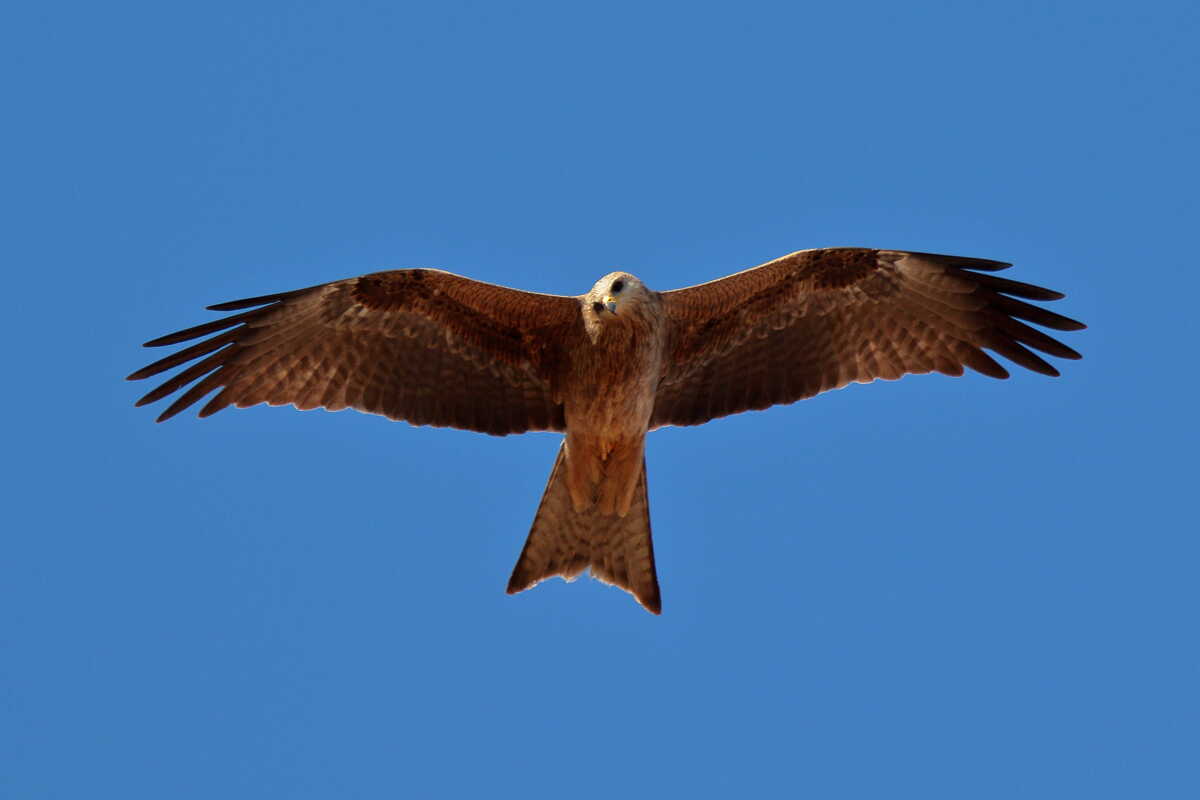
Banded lapwings (Vanellus tricolor) are distinguished by the black band on their chests and are native to Australia. They are also called "brown flocks" or "plain plovers". Quite aggressive whilst nesting, the bird usually breeds after rainfall. It uses an interesting tactic to distract intruders: it fakes a broken wing. Learn more at https://en.wikipedia.org/wiki/Banded_lapwing
Photo by John Harrison (CC BY-SA 3.0)
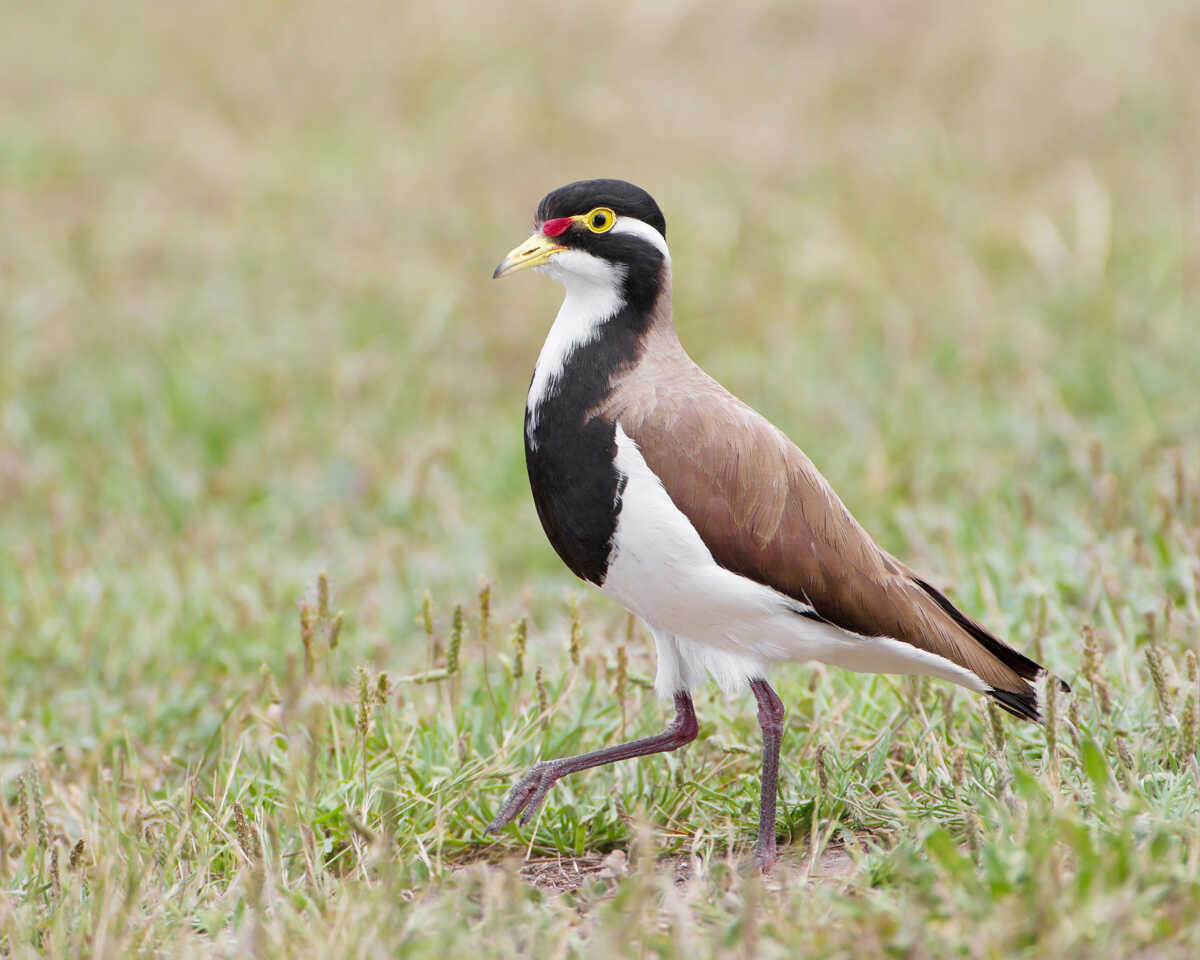
Spinifiex Pigeons (Geophaps plumifera) are endemic to Australia and are often called "the plumed-pigeon" or "gannaway pigeon". They are usually found in arid areas, dried-up creek beds and where spinifex grass grows -- hence the name. Learn more at https://en.wikipedia.org/wiki/Spinifex_pigeon
Photo by John Harrison (CC BY-SA 3.0)
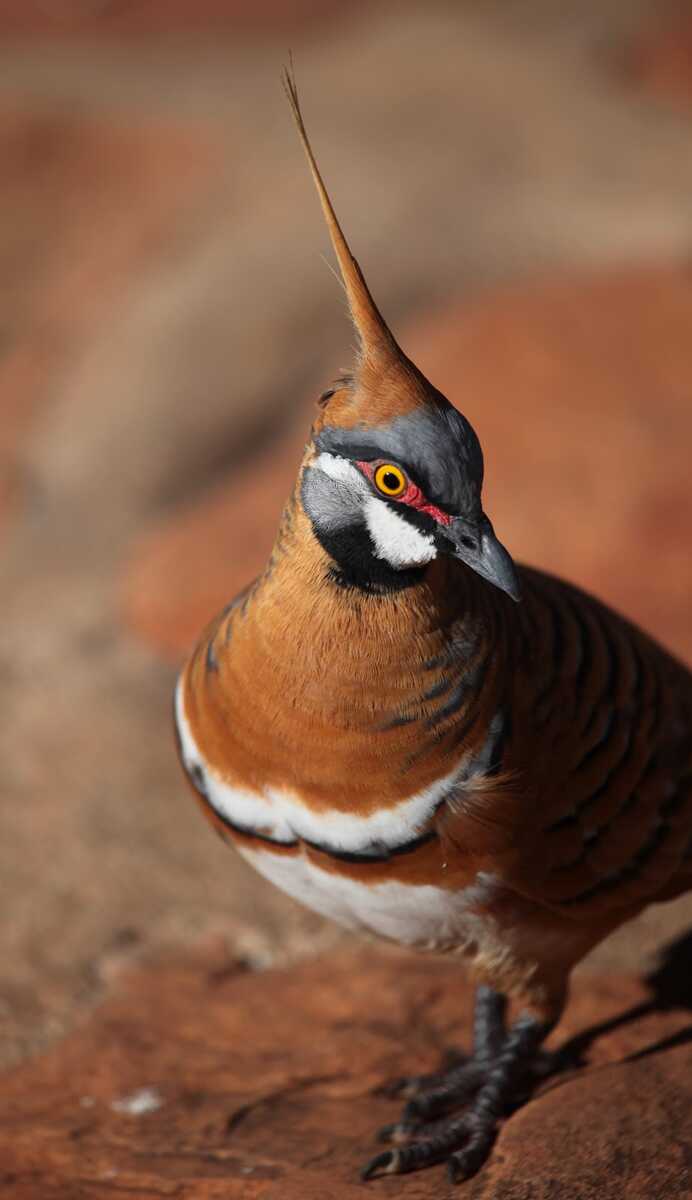
Budgerigars (Melopsittacus undulatus) are lovely little birds that have green & yellow feathers. Other names include "budgie" and "parakeet". They are a nomadic species which means they go wherever they can find food and water. They are always found in flocks --generally in grasslands-- and can present quite a sight after rain. Learn more at https://en.wikipedia.org/wiki/Budgerigar
Photo by Jerry Tillery (CC BY 2.0)
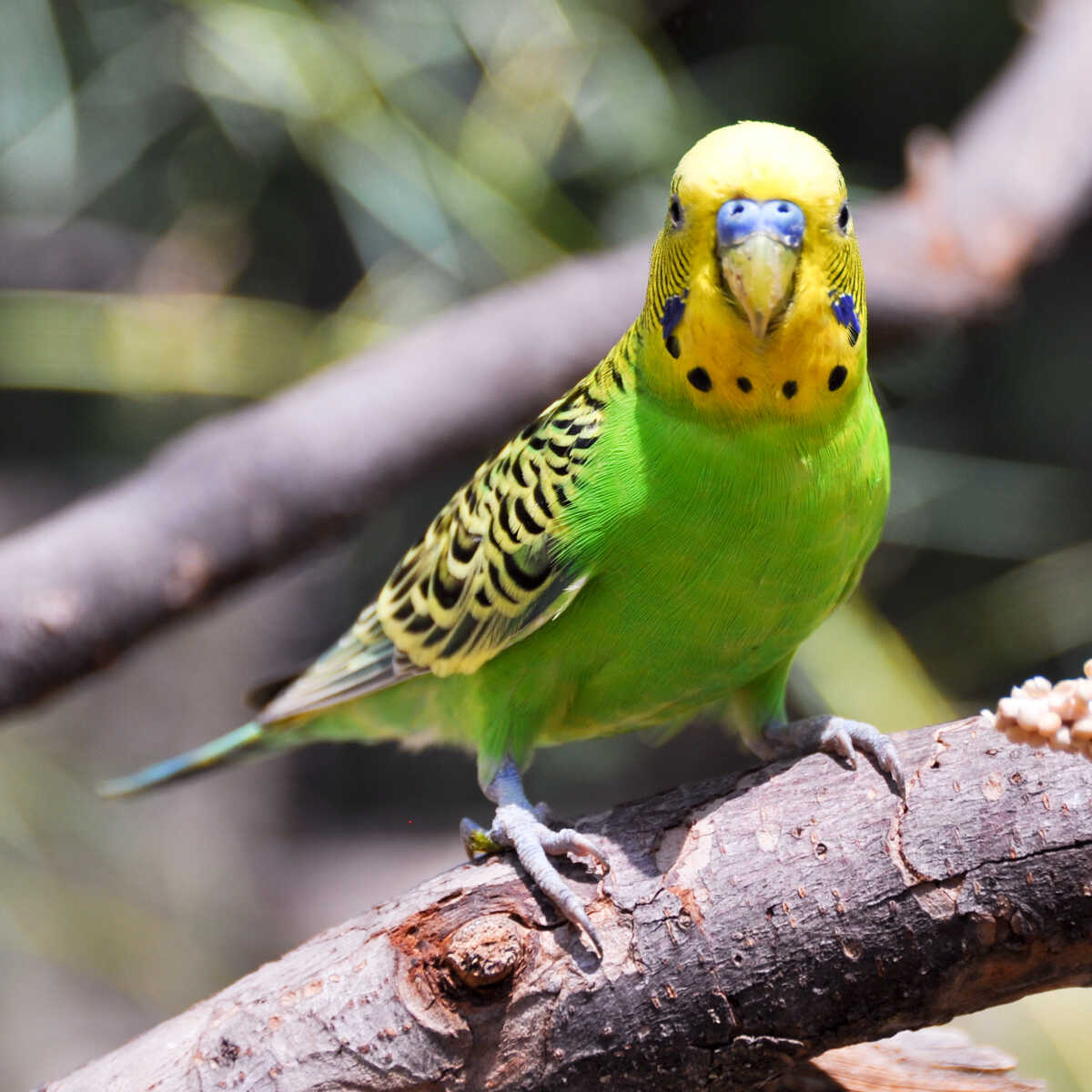
The zebra finch is quite small, has a red bill and a tail with zebra stripes on it (hence the name). This species (Taeniopygia guttata) is quite social and is usually found near water in large flocks. The bird typically feeds on grass seeds and has a jerky flight pattern. Learn more at https://en.wikipedia.org/wiki/Zebra_finch
Photo by John Harrison (CC BY-SA 4.0)
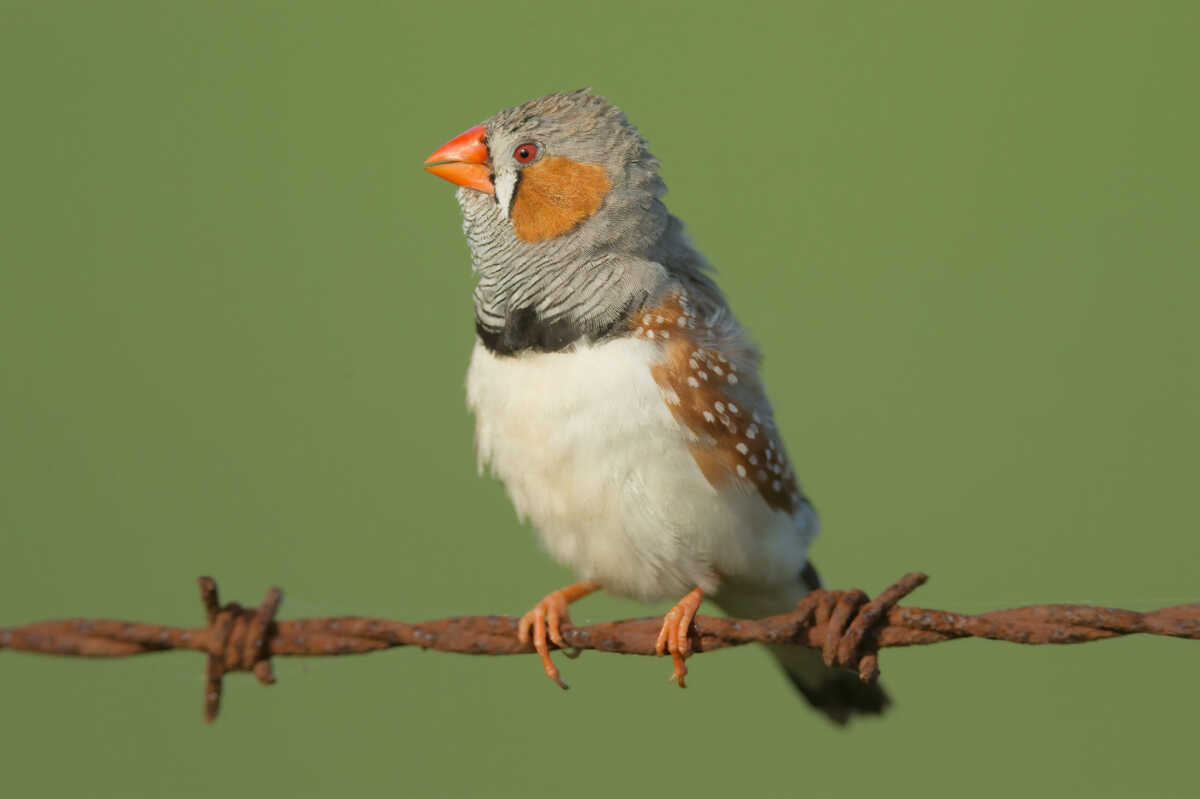
Grey-headed honeyeatear (Ptilotula keartlandi) has a loud and penetrating call and is endemic to Australia. It can be seen in arid areas around gorges, hillsides and less dense woodlands. It is distinguished by its dark eye patch and grey cap, with a yellow body. Learn more at https://en.wikipedia.org/wiki/Grey-headed_honeyeater
Photo by Graham Winterflood (CC BY-SA 4.0)
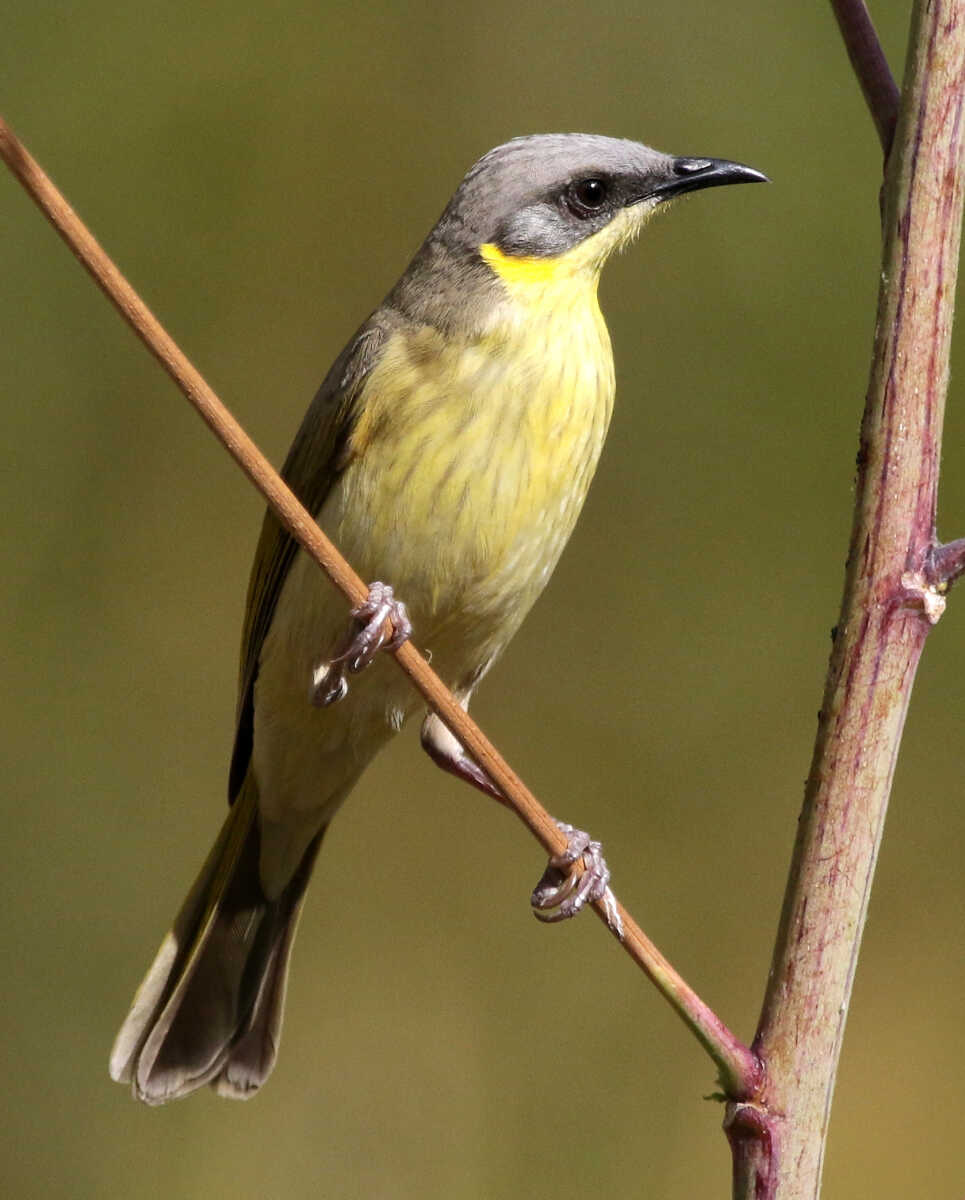
This raptor (Falco cenchroides) does not use its speed to hunt, it perches and watches for its prey patiently. It feeds on other birds, small mammals and insects. With a pointed wingtip and a black band on its tail, identifying the Nankeen Kestrel is not particularly hard. It's called the Nankeen Kestrel because of its rufous body parts, which can also be called nankeen. Learn more at https://en.wikipedia.org/wiki/Nankeen_kestrel
Photo by John Harrison (CC BY-SA 4.0)
